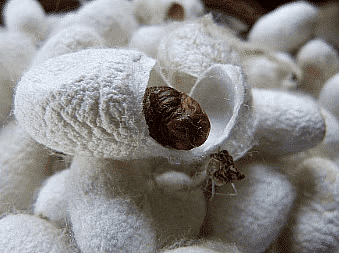Important Questions for Class 8 Social Science Agriculture
Q1: What is agriculture and how is it classified into different types?
Ans: Agriculture involves cultivating soil, growing crops, and raising livestock. It's categorized into
- Subsistence farming which includes intensive and primitive methods.
- Commercial farming comprising grain, mixed, and plantation techniques.
Crops
Q2: Describe the farm system with its inputs, processes, and outputs.
Ans: A farm system has
- Inputs such as seeds, fertilizers, machinery, and labor.
- Processes like ploughing, sowing, and irrigation.
- Outputs including crops, wool, dairy, and poultry products.
Agriculture Machinery
Q3: Explain the difference between intensive subsistence farming and commercial farming.
Ans:
- Intensive subsistence farming: Farmers use simple tools and labor on small plots to fulfill their family's needs.
- Commercial farming: Involves growing crops or raising animals for sale, using advanced technology and covering large areas.
Q4: What is shifting cultivation and what are its disadvantages?
Ans:
- Shifting cultivation: Involves clearing land, using it until the soil loses fertility, then moving to a new area.
- Disadvantages include
- Deforestation
- Loss of biodiversity
- Unsustainable soil use
Q5: Discuss the concept and significance of organic farming.
Ans:
- Organic farming Uses natural pesticides and manures, avoids chemicals, and doesn't involve genetic modifications.
- Significant for
- Sustainable agriculture
- Healthier produce
- Environmental conservation
Q6: Describe the factors influencing the type of farming in a region.
Ans: Factors influencing farming type include geographical conditions, demand for produce, availability of labor, and level of technology.
Q7: What are the major food crops and where are they primarily grown?
Ans:
Major food crops:
- Rice: Grown in tropical and sub-tropical regions
- Wheat: Thrives in temperate zones
- Maize: Cultivated in regions with moderate temperature and rainfall
Rice Wheat and Maize
Cultivation depends on
- Climatic conditions
- Types of soil
Q8: How does climate affect the cultivation of rice and wheat?
Ans:Rice cultivation Needs:
- High temperature
- High humidity
- Significant rainfall
Wheat cultivation Grows best with:
- Moderate temperature and rainfall
- Bright sunshine at harvest time
Q9: Explain the importance of horticulture and its types.
Ans: Horticulture Involves growing vegetables, fruits, and flowers for sale.
- Includes
- Sericulture: Producing silk
- Pisciculture: Breeding fish
- Viticulture: Growing grapes
- General horticulture for fruits and vegetables
 Sericulture
Sericulture
Q10: What is nomadic herding and where is it practiced?
Ans: Nomadic herding Moving with animals to find pasture and water.Practiced in
- Semi-arid and arid regions like Sahara
- Parts of Central Asia
- Rajasthan and Jammu and Kashmir in India
Q11: Discuss the role of technology in modern agriculture.
Ans:
Modern agriculture Depends a lot on technology for better farming.
Uses
- High-yielding variety seeds
- Mechanization like tractors and harvesters
- Scientific soil and water management
- Precision farming techniques
Q12: How does agricultural development contribute to food security?
Ans:
- Agricultural development Boosts farm production using better cultivation methods, crop variety, irrigation, and technology.
- Results in
- Enhanced food security
- Stable and enough food supply
Q13: Compare the agricultural practices of a farm in India with that in the USA.
Ans: In India, agriculture often involves small-scale farming with traditional practices for subsistence, while in the USA, it's large-scale, mechanized, and oriented towards commercial production.
Q14: What are plantation crops and where are they mainly grown?
Ans:
- Plantation crops: Include tea, coffee, sugarcane, and rubber.
- Grown in
Tropical regions
- Characteristics
- Cultivated on large estates
- Need a lot of labor
- Often processed on or near the plantations
Q15: Explain the role of cooperative societies in agricultural development in India.
Ans:
Cooperative societies: Help farmers in India.
- They provide
- Access to better resources
- Financial help
- Improved seeds and fertilizers
- Guidance on modern farming techniques
- Helps in
- Agricultural development
- Sustainability
|
69 videos|431 docs|46 tests
|
FAQs on Important Questions for Class 8 Social Science Agriculture
| 1. What are the main types of agriculture? |  |
| 2. What are the advantages of organic farming? |  |
| 3. How can pests be managed in agriculture? |  |
| 4. What are the essential nutrients required for plant growth? |  |
| 5. How does irrigation impact agriculture? |  |






















